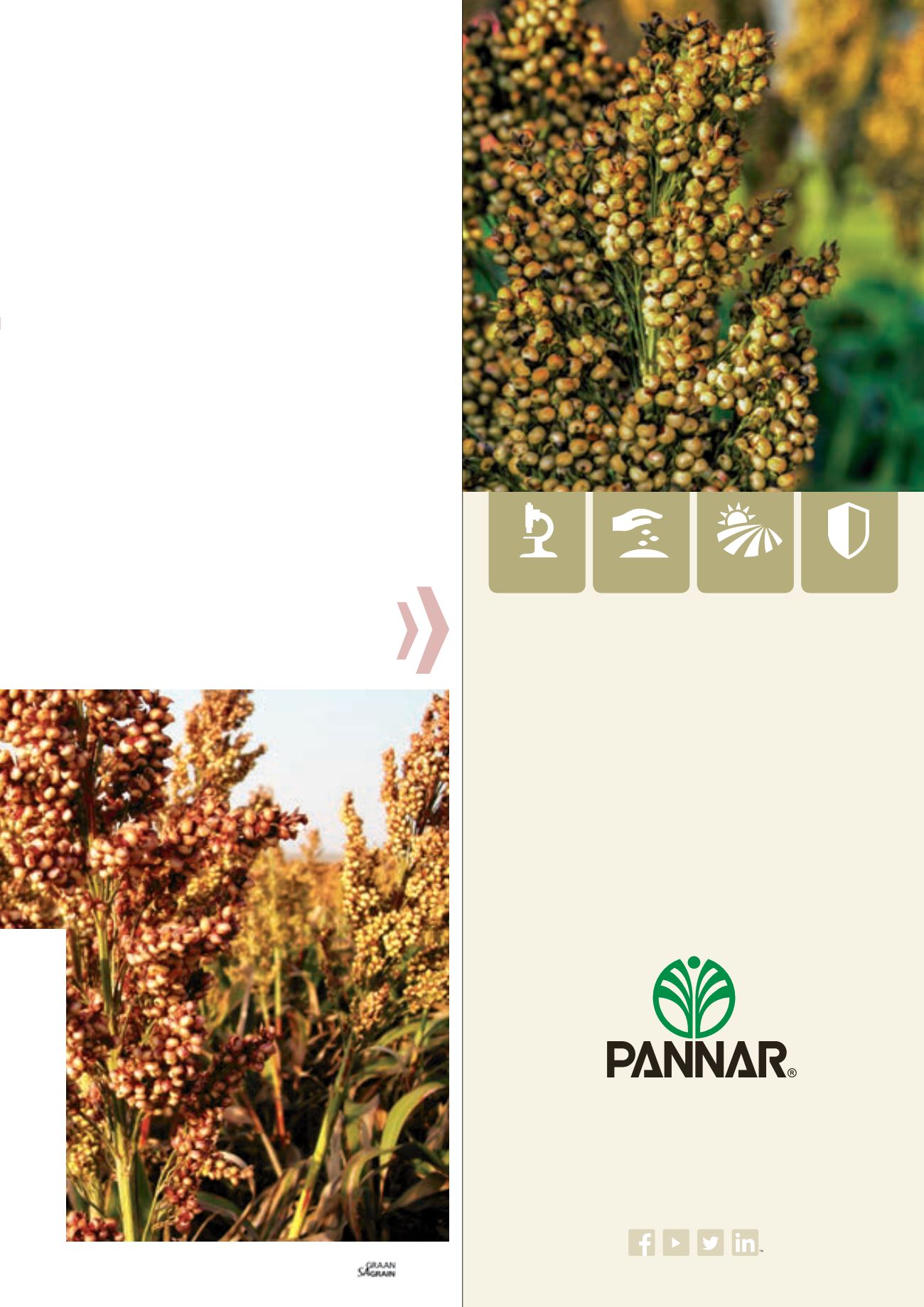

PANNAR se ongeëwenaarde graansorghum-pakket
vorm die ruggraat van graansorghum-produksie in
Suid-Afrika. Plaaslik-ontwikkelde basters word ook
in Suid-Amerika, Meksiko, Australië en die res van
Afrika aangeplant.
Bio-etanol-produksie
gerugsteun
deur wêreldklas-
navorsing.
2015/GSS/A/17
® Geregistreerde handelsmerke van PANNAR BPK, © 2014 PANNAR BPK
Saam boer ons
vir die toekoms
™
www.pannar.com infoserve@pannar.co.zaULTRAMODERNE
NAVORSING
GEWASVOORSORG
PRESISIE-
BEPLANNING
GEWASBESKERMINGS-
BESTUURSPRAKTYKE
Botswana has been decreasing. From 2010 to 2014, the quantity of
South African exports to Botswana decreased by 15%.
South Africa’s sorghum exports within
the global context
In value terms, South Africa is the seventh largest exporter of sor-
ghum in the world, after the United States of America, Argentina,
Australia, the Ukraine, France and India (ITC, 2015). Global sorghum
exports are concentrated within the top six largest exporters (which
are the United States of America, Argentina, Australia, the Ukraine,
France and India) which account for 94% of the total global exports.
South Africa is one of the smallest players in the global export
market, contributing a mere 1,4% of the total world sorghum exports.
Who are the leading global importers of
sorghum?
There are 16 African markets that rank among the top 50 sorghum
global importers. On average, African markets account for 10%
of the global import demand. Sudan and Ethiopia are the largest
markets on the continent. However, they each account for just 2%
of the global import demand.
Outside the continent, Japan, China, Mexico and Colombia are
the leading sorghum importing markets, all constituting more than
73% of the global import demand. In particular, Japan and Mexico
are the leading importers of sorghum in the world. They both ac-
count for 55% of the world’s sorghum imports. The top 20 sorghum
import markets account for 95% of the global import demand.
Emerging markets have also been among the fastest growing
regions for sorghum imports. The Middle East (25%), Asian and
Far East markets (36%) showed significant growth between 2009
and 2013.
Above all, Europe has shown the most impressive growth, with
imports increasing by an annual average of 54% over the same pe-
riod (2009 to 2013). Global import demand is also increasing – in the
same period, the increase was 17,6%.
49

















